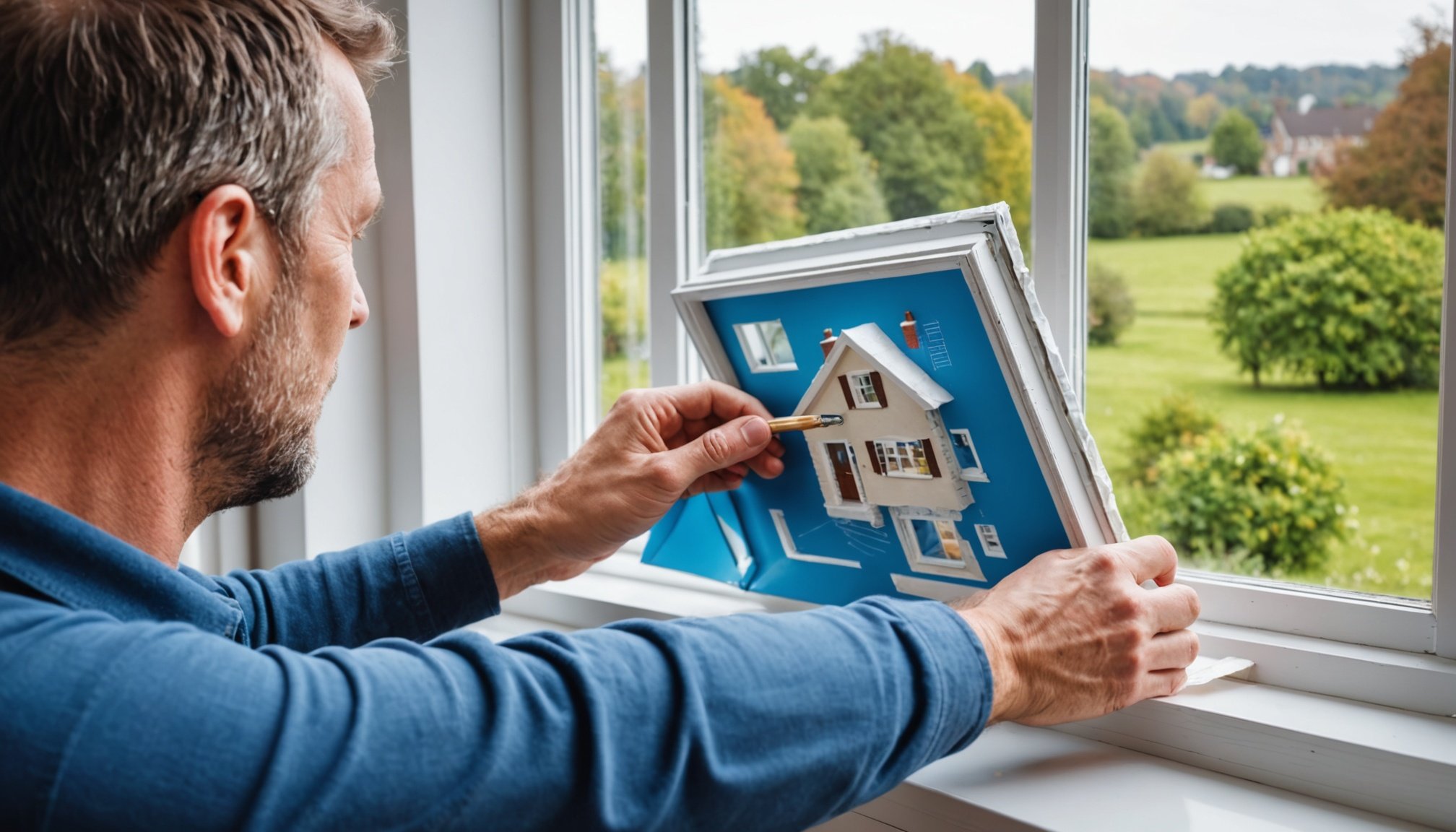Understanding Window Insulation
Window insulation benefits extend beyond just keeping the cold at bay. It plays a pivotal role in enhancing a home’s energy efficiency, acting as a barrier to heat loss and reducing the need for excessive heating. This can lead to significant cost savings over time, as your heating bills will likely decrease with improved insulation.
There are several common methods for achieving effective window insulation. These include installing double or triple-glazed windows, using window films, adding thermal curtains, or applying weather stripping. Each of these methods serves to create an additional layer that minimizes heat exchange between the interior and exterior of a home.
Also to discover : Unlocking the benefits of composting toilets: a comprehensive guide for uk off-grid homeowners
The energy efficiency brought about by effective window insulation contributes to a more environmentally friendly household. By reducing energy consumption for heating, you are also lowering your carbon footprint.
Moreover, the long-term cost savings from enhanced window insulation can be substantial. As less heat escapes through the windows, your heating system won’t have to work as hard, leading to reduced energy bills year-round. The initial investment in quality insulation can often pay for itself through these savings, making it a smart, cost-effective choice for homeowners seeking to improve both comfort and efficiency.
Also to see : Thriving hydroponics in small spaces: the ultimate guide for uk residents to cultivate an abundant garden in your compact flat
DIY Window Insulation Materials
For those embarking on DIY window insulation projects, selecting the right insulation materials is crucial for enhancing energy efficiency. Commonly used materials include thermal insulation films, weather strips, and draft excluders. These materials create effective barriers against heat loss when applied correctly. Thermal films, for example, add a layer that reflects heat back into the room, while weather strips seal gaps to prevent air leaks.
When sourcing materials in the UK, consider reputable suppliers that specialise in building and insulation products. Local hardware stores or online marketplaces like Amazon often stock a variety of DIY insulation options. Ensuring quality and durability in your choice of materials is essential to maximise the energy efficiency and longevity of your insulation efforts.
Essential tools for a DIY project typically include a measuring tape, utility knife, and adhesive or mounting solutions to secure the insulation materials. Using these tools effectively can significantly streamline the installation process, allowing even novice DIYers to achieve professional results. Equipping yourself with the right resources and understanding their application not only boosts your home’s energy efficiency but also contributes to substantial cost savings over time.
Step-by-Step DIY Window Insulation Strategies
Sprucing up your home’s energy-saving strategies with DIY insulation methods can be an efficient and rewarding venture.
Internal Insulation Techniques
Start with internal options like thermal insulation films or bubble wrap. These are easy to apply and remove, making them ideal for renters. Films add a reflective layer to windows, enhancing energy efficiency by maintaining interior warmth. Simply measure your windows, cut the film to size, and use soapy water to adhere it smoothly to the glass.
External Insulation Options
For external solutions, consider storm windows. While more complex to install, they’re effective in providing an added barrier against the cold. This involves measuring frames meticulously, choosing either plastic or glass inserts based on budget and climate, and ensuring a snug fit to prevent air leaks.
Temporary and Seasonal Methods
In colder months, temporary fixes can be lifesavers. DIY draft excluders are quick to make with textiles, enclosing them around window sills to block chilly breezes. Or, fashion seasonal window inserts using lightweight materials like foam; insert them when the temperature drops and remove when not needed.
Exploring these techniques can significantly bolster your home’s insulation effectiveness, driving down heating costs whilst keeping your living space toasty warm.
UK Climate Considerations for Window Insulation
Understanding the UK climate effects on window insulation is pivotal for maximizing your home’s energy efficiency. The UK’s temperate maritime climate involves significant seasonal variations, affecting how insulation should be approached. In colder months, effective window insulation is crucial for retaining heat and mitigating drafts. Conversely, in warmer weather, it can help to keep interiors cool by reducing heat gain.
Familiarity with UK-specific energy efficiency regulations and building standards ensures your insulation complies with legal requirements. The Energy Performance Certificate (EPC) rates buildings on energy efficiency, and ensuring your home meets high standards impacts both utility bills and property value. Awareness of these standards enables practical improvements that align with the EPC requirements.
Moreover, understanding building regulations—such as those that affect the installation of double-glazing or retrofitting storm windows—ensures modifications enhance both functionality and compliance. Such regulations often dictate the thermal performance needed for construction projects, serving as guidelines for insulation initiatives.
Proactively addressing these considerations supports a sustainable living environment. By aligning with local standards and adapting to the climate, you can effectively deploy window insulation as part of a broader energy conservation strategy, reaping both environmental and financial benefits.
Measuring Effectiveness of DIY Window Insulation
When it comes to insulation effectiveness, assessing your DIY projects’ impact is crucial. Begin by identifying methods to monitor these improvements. A straightforward approach is conducting a thermal audit both before and after insulation application. This reveals areas of heat loss and quantifies improvements.
Measuring energy savings post-insulation can be performed using simple methods, like comparing utility bills over successive seasons or using an electricity consumption monitor. Tracking these changes highlights the financial benefits of your efforts. Additionally, infrared thermometers or cameras can visually document temperature variances around insulated windows, providing tangible evidence of reductions in heat loss.
The importance of thermal performance cannot be overstated. A window’s ability to insulate effectively ensures long-term energy efficiency. This not only leads to cost savings but also contributes to a sustainable living environment by reducing your carbon footprint.
Evaluating these metrics equips homeowners with insights into their energy consumption, reinforcing the value of thoughtful insulation practices. By continuously monitoring and adapting your insulation strategies, you can ensure that your DIY efforts are achieving desired thermal and financial outcomes.
Additional Energy-Saving Practices
Improving energy efficiency goes beyond just window insulation. Home energy efficiency tips can lead to a more sustainable lifestyle while reducing costs. Simple practices like incorporating energy-efficient lighting, such as compact fluorescent lamps (CFLs) or LED bulbs, can significantly lower energy consumption. Smart thermostats also allow for better control over heating and cooling, adapting to your habits and ensuring optimal energy use.
Integrating window insulation with other sustainable practices enhances overall effectiveness. Regularly maintaining and sealing air leaks around doors and windows, coupled with proper insulation, prevents unnecessary energy loss. Additionally, using energy-efficient appliances reduces electricity demand, contributing to further savings on utility bills.
Consider UK energy-saving programs that offer guidance and incentives for adopting sustainable measures. Local grants or rebate programs often encourage home improvements that lead to reduced energy consumption. Engaging in these initiatives not only supports personal cost savings but also aligns with broader environmental sustainability goals.
Including window insulation in a cohesive energy-saving strategy maximizes benefits. Creating a holistic approach by combining methods strategically addresses various aspects of energy efficiency, supporting both your financial goals and the planet’s well-being. Remember, every small change contributes to a significant, positive impact over time.





